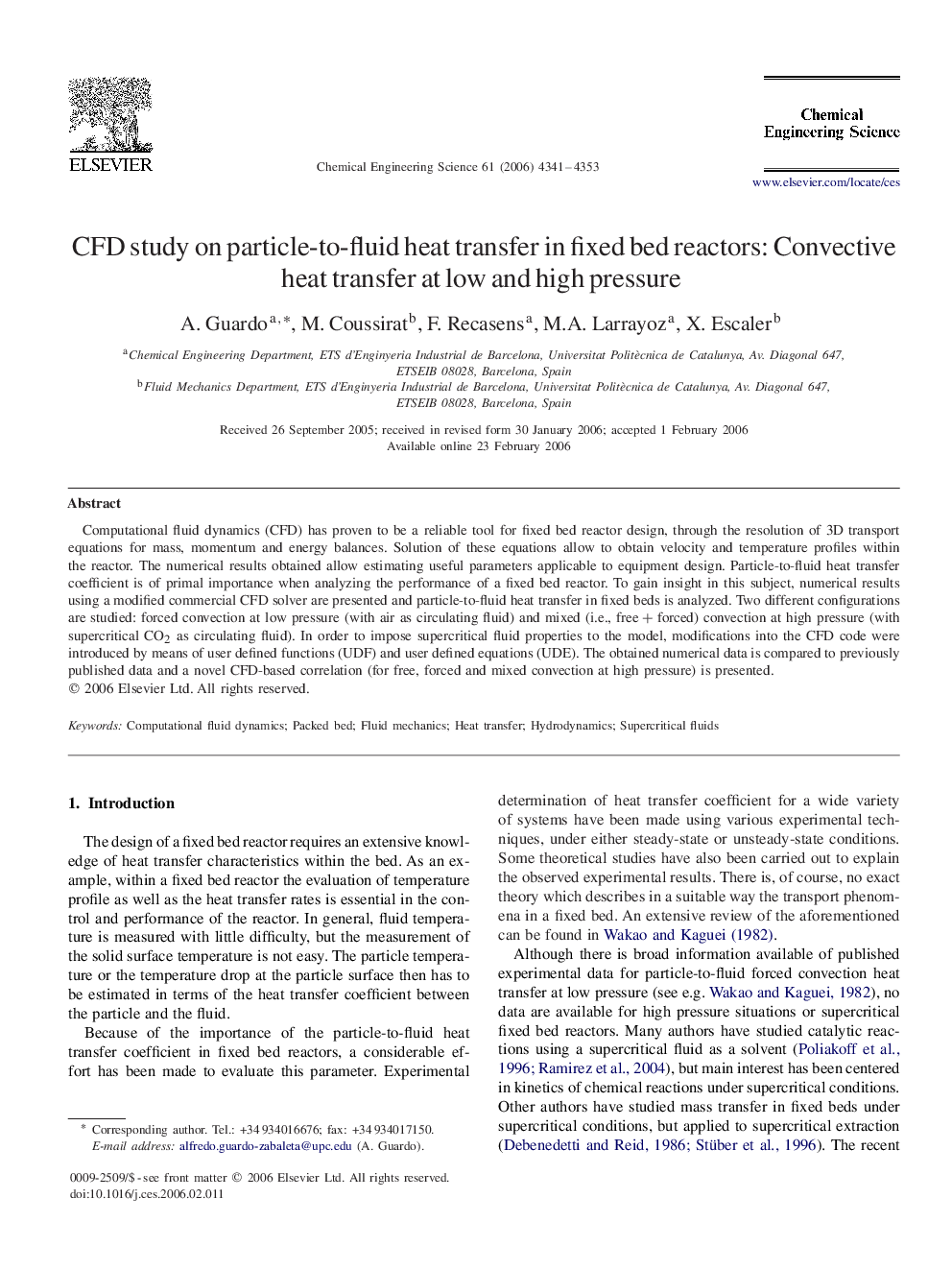| Article ID | Journal | Published Year | Pages | File Type |
|---|---|---|---|---|
| 159701 | Chemical Engineering Science | 2006 | 13 Pages |
Computational fluid dynamics (CFD) has proven to be a reliable tool for fixed bed reactor design, through the resolution of 3D transport equations for mass, momentum and energy balances. Solution of these equations allow to obtain velocity and temperature profiles within the reactor. The numerical results obtained allow estimating useful parameters applicable to equipment design. Particle-to-fluid heat transfer coefficient is of primal importance when analyzing the performance of a fixed bed reactor. To gain insight in this subject, numerical results using a modified commercial CFD solver are presented and particle-to-fluid heat transfer in fixed beds is analyzed. Two different configurations are studied: forced convection at low pressure (with air as circulating fluid) and mixed (i.e., free+forcedfree+forced) convection at high pressure (with supercritical CO2CO2 as circulating fluid). In order to impose supercritical fluid properties to the model, modifications into the CFD code were introduced by means of user defined functions (UDF) and user defined equations (UDE). The obtained numerical data is compared to previously published data and a novel CFD-based correlation (for free, forced and mixed convection at high pressure) is presented.
